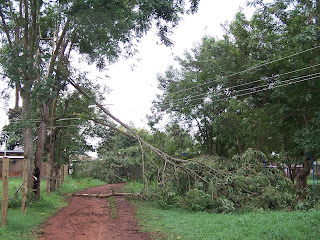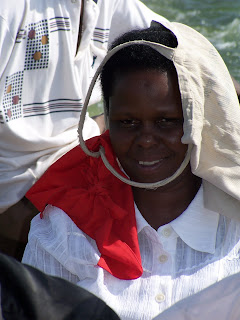So for the past month and a half I have been involved with planning the Peace Corps Uganda 50th Anniversary event for all of the Peace Corps Volunteers, Peace Corps Trainees, Peace Corps Staff and Returned Peace Corps Volunteers in Uganda. I have been working with a few of my close friends here in Uganda to get this event running and off the ground. I am co-coordinating the event with a volunteer who is the health and economic development group a year ahead of me named Dave. He has been working on this event since coming back from his U.S. vacation in January. A lovely volunteer named Lisa, who is a health volunteer from my class, is in charge of all the volunteers for the event and coordinating the schedule for the service day.
We have put a lot of hard work for this day and it is starting to pay off! Many Peace Corps Volunteers are excited to participate and are coming from all over the country. Currently we have 115 volunteers out of the 150 that are in country participating - our goal was 120 so we did darn good! The reception and some surprises for the reception are starting to fall into place which is lessening the stress before the event - food is in order, speakers are almost in place, video is coming along, etc. This planning period has been a process, but all in all has been extremely fun and a good experience to learn how to plan a large event in a developing nation.
Below is the schedule for the day plus details of the service projects. Enjoy!
SERVICE DAY SCHEDULE (April 1, 2011)
7:30am: Peace Corps vehicles pick up volunteers to bring to Lweza Training Center
8:30am: 50th Anniversary Event kick-off at Lweza Training Center
9:00am: Service project groups meeting/organize for departure
↓ Walk to St. Gyavira and Ranch on Jesus schools for Service Day9:30am: Service Projects Start
1:00pm: Groups Rotate Through Lunch
2:00pm: Continue Service Projects
3:30pm: Start to clean up project areas
4:00pm: 50th Anniversary Day Projects Are Completed
6:00pm: 50th Anniversary Volunteer Education Seminar/Reception at Lubowa Gardens
9:00pm: Volunteer Education Seminar/Reception Ends
SERVICE PROJECT DETAILS
Campus Beautification:
Description: This will consist of a construction of a Peace Garden at the local school. The space will be used by the school as a place for the children to have meetings with their teaches, their school groups and a place to go and calm down/enjoy nature/have quiet time.Cleaning garden area, planting trees, general landscaping and maintenance, and placing benches.
Animal: Zebra
Location: St. Gyavira Primary School
Waste ManagementDescription: Clean the campus and teach primary students about the benefits of rubbish collection. Place trash cans strategically around the campus and assign students a schedule to empty them.
Animal: Giraffe
Location: St. Gyavira Primary School
Painting ClassroomsDescription: Paint two dormitories and one classroom as well as refurbish two chalkboards with chalkboard paint.
Animal: Gorilla
Location: St. Gyavira Primary School
Water SystemDescription: Repair two water tanks and an existing water catchment system, install taps and security gates, and increase the integrity of the gutter system.
Animal: Crane
Location: St. Gyavira Primary School
Student MuralDescription: Work with students and volunteers to paint a mural on an outdoor wall with the theme “peace.” The mural will have the word "peace" in the middle and every student will get a 1 ft x 1 ft square to draw what they think peace means in their community. Of course, the Peace Corps logo will be in the middle hole of the "P".
Animal: Elephant
Location: St. Gyavira Primary School
Sports OutreachDescription: Through football and other outdoor activities, work with students to promote teamwork, communication skills, personal integrity, and confidence.
Animal: Hippo
Location: St. Gyavira Primary School
Life Skills LessonsDescription: Teach various life skills lessons and activities to primary students. These activities will revolve around healthy living, gender roles, sex, HIV/AIDS, etc.
Animal: Tilapia
Location: St. Gyavira Primary School
Stove BuildingDescription: Build one rocket-stove and train PCTs and locals on how to build and use them.
Animal: Lion
Location: Ranch on Jesus Primary School
Faculty WorkshopsLeader: Celeste Arista, Brian Stock, Brennan Fay
Description: Train teachers and staff on Faculty and Staff Toolbox and providing methodology development sessions.
Animal: Crocodile
Location: Lweza Conference Centre





































